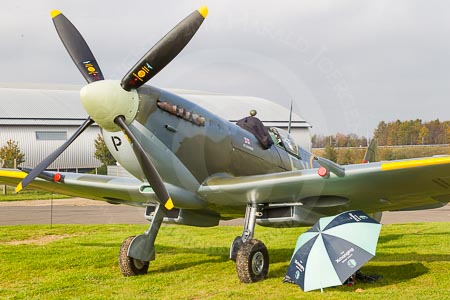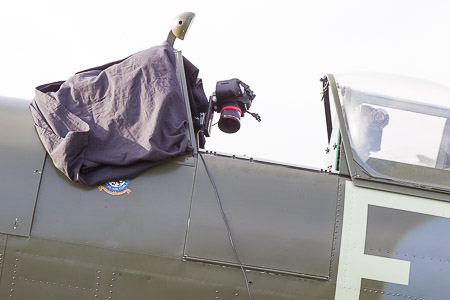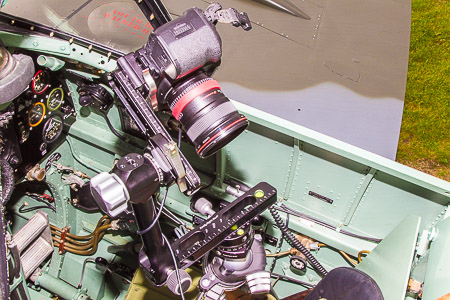Interactive 360° Cockpit Panorama
Supermarine Spitfire Mark IX (TD314)
The Spitfire is one of the most successful panoramas so far:
- Hundreds of views per day
- Over 200,000 views in the first week when the link went viral
- Visitors spend, on average, several minutes with it
- The customer uses it on two different website with great success
Of course the Spitfire is the iconic British fighter of WWII and the Battle of Britain, a legend anyone knows. This aircraft is exceptionally well restored, and has perhaps the most authentic cockpit of any still flying Spitfire anywhere in the world. But there are more reasons why visitors spend, on average, several minutes with it:
- The panorama doesn't look like marketing
- There is a lot to see and explore
- Starting the engine is fun
- Playing with the panorama is an experience visitors happily share
Visiting the client's websites, and exploring the panorama, can create a connection marketeers marketeers dream of.
The Services page will tell you more - or get directly in contact with us!
We are using the cockpit panorama of out Spitfire TD314 on two of our websites, where it attracts high numbers of visitors, many of them becoming customers.
Since we are using the panorama, our conversion rate has gone up by over 300%.
The panorama gets updated whenever we need a change or new possibilities can be added. For us as a business it’s a pleasure working with Harald Joergens Photography.
Keith Perkins (Owner of AeroLegends)
Customer:
The client is Aero Legends, based at the Lashenden Aerodrome in Kent, the former RAF Headcorn, and at Sywell Aerodrome, the former RAF Sywell in Northamptonshire, where many aerial shots of the movie Battle of Britain were taken..
Aero Legend and Action Stations, their other brand, offer many ways to get close and personal with a real Spitfire, from sitting in the cockpit of the Spitfire shown in the panorama over flying next to a real Spitfire, and up to flying in a Spitfire!
Not just for marketing
The panorama is used by Aero Legend customers to familiarize themselves with the cockpit in advance, and it is very much enjoyed by veterans that get the chance to fly in a Spitfire again.
Shown on a big screen at the Aero Legends Headcorn office, the panorama is used for pre-flight briefings: Instead of having a pilot standing on the wing, explaining all the bits and pieces to an excited customer sitting in the cockpit, a member of staff can explain every detail, zooming in onto every switch and instrument.
How it was done:

All photography has been done with the camera remotely controlled via a laptop computer. The main challenges have been the the confined space and the quickly changing light conditions during the photography stage - from heavily overcast sky to bright sunshine.
Because of the very limited room in the cockpit, an automated panoramic head could not be used, so all the positioning had to be done manually.

To have every detail in focus, from the closest to the lens (4 inches) to the furthest (almost infinite), focus stacking has been used. All photography has been done with available light only, using exposure bracketing. The combination of focus stacking and exposure bracketing means a large number of photos: The cockpit section is based on around 1,500 21-megapixel RAW images,
The aircraft:
TD314 was built at Castle Bromwich in late 1944 and fitted with a Merlin 70 as a High Level Fighter (HFIXe). She was one of the last high back Spitfires built as the production line switched to low back aircraft in February of 1945.
She was delivered to 33 MU at Lyneham on 30th March 1945, transferring later that month to 30 MU before a further move to 6 MU where she was prepared for service with 183 (Gold Coast) Squadron at Chilbolton on the 24th June 1945.
183 squadron only kept its Spitfires for a short time before re-equipping with Tempests.
Further information can be found on the AeroLegends website.
Credits:
- Aircraft Restoration Company, Duxford for their help in the photography stage of the project.
- Clipping Path Adept for some pretty complex and time consuming editing work
- James Huckle, of Aircraft Sound Recordings, for the Merlin engine startup sound recording
- Graham from SpitfireSpares for the kind permission to use some of their static images
